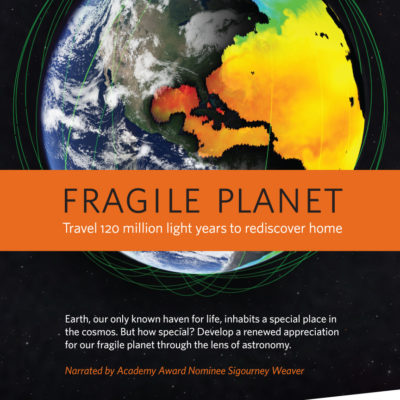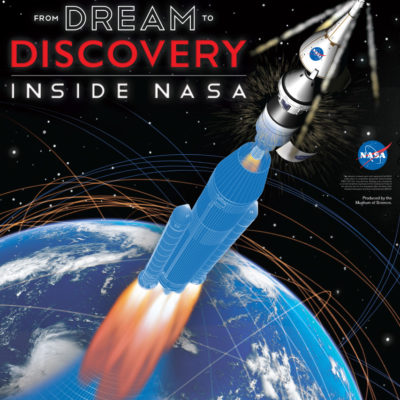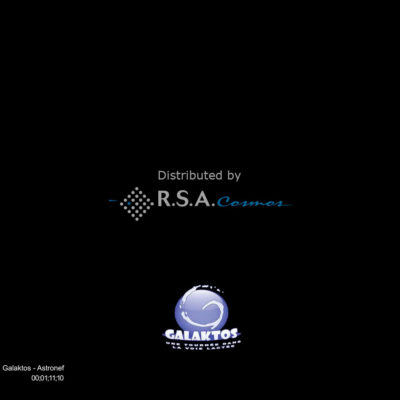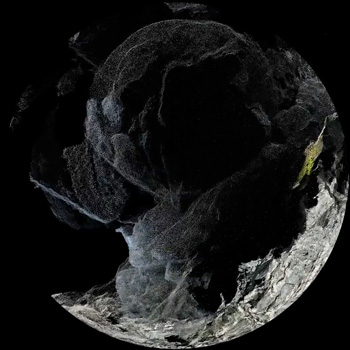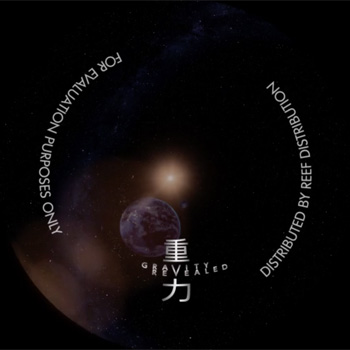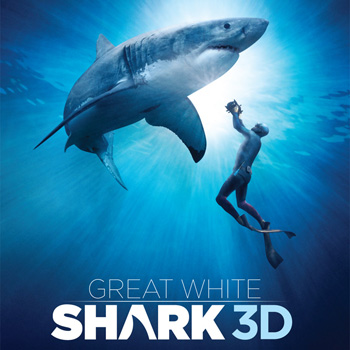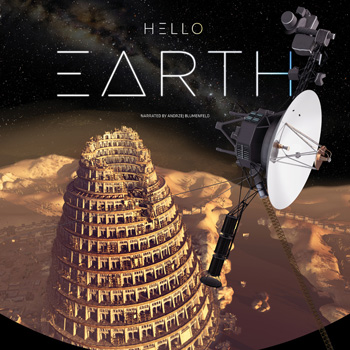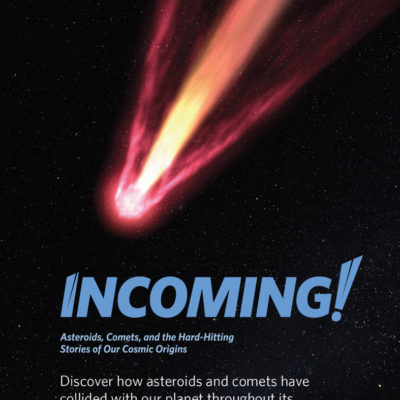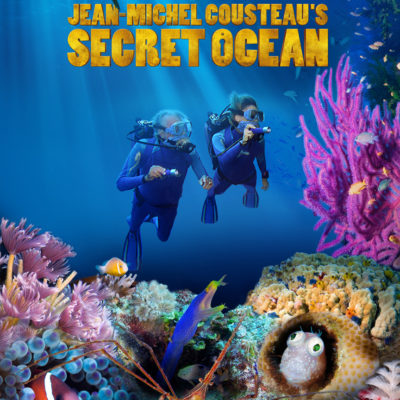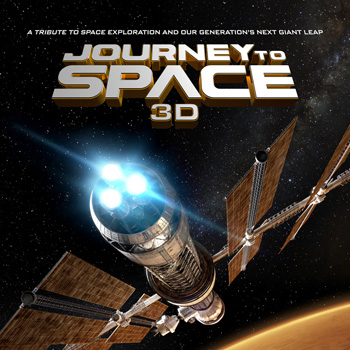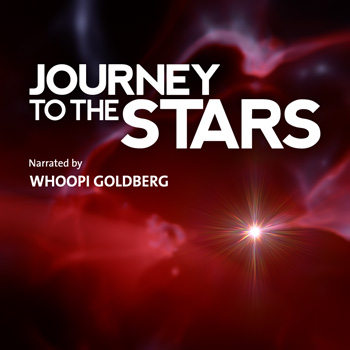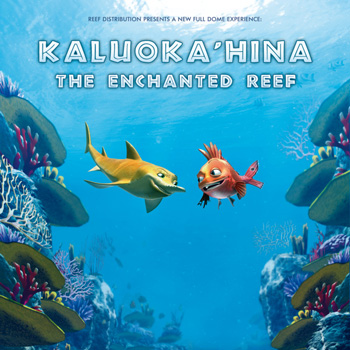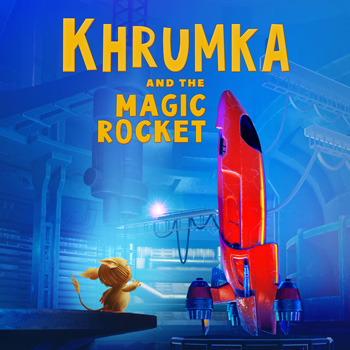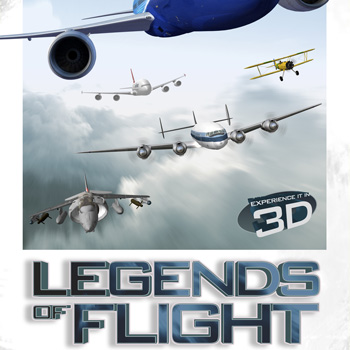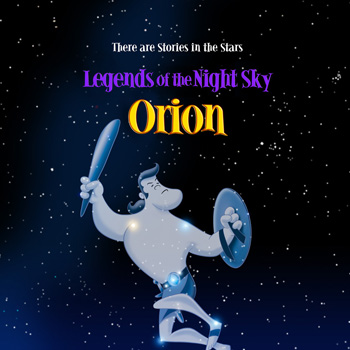Film titles available for full dome theaters and planetariums.


Develop a renewed appreciation for our fragile planet through the lens of astronomy as Sigourney Weaver guides audiences on an immersive excursion that explores a universe filled with the possibility of life.
Fragile Planet starts with an astronaut’s view highlighting Earth’s unique regions. The journey then continues to the Moon, Mars, and beyond the Milky Way to search for habitats that might host extraterrestrial life. The show’s theme — that Earth is the only known haven for life, and thus is important to protect — echoes the themes of biodiversity and sustainability.
The foundation of the show lies in scientific visualization, utilizing observed data as the starting point for the imagery. More than three dozen researchers and institutions provided data in support of Fragile Planet; their contributions range from high resolution satellite imagery of Earth to the positions of galaxies more than 50 million light years away.
From the three-dimensional terrain of Valles Marineris on Mars to the locations of extrasolar planetary systems in interstellar space, everything audiences see in Fragile Planet is based on astronomers’ best understanding of the universe. Scenes requiring extrapolation from known observations were developed with the assistance of researchers with expertise in the relevant topics.
Fragile Planet was written and produced by the visualization studio of the California Academy of Sciences. For two sequences in the show, they collaborated with the National Center for Supercomputing Applications (NCSA) at the University of Illinois at Urbana-Champaign. The spectacular visuals are augmented by an evocative, multi-dimensional sound environment by renowned giant-screen composer Michael Stearns.
Experience the challenges of the next generation of space exploration in this brand-new Planetarium show. By using exciting real-life projects like NASA’s James Webb Space Telescope and the New Horizons mission to Pluto, the show highlights the extreme nature of spacecraft engineering and the life cycle of a space mission — from design and construction to the rigors of testing, launch, and operations. Blast off and take the voyage with us!
Eugene Milkman, nicknamed Milky, is an old robot – a small but strong man – who has been delivering milk for over 800 years on behalf of the company Galaktos. Starting his new tour, he takes Craig McIntosh, a young internship who almost quit going to school, and they both take off for a journey through the Milky Way. Milky evokes the memories of his career while Craig learn more about magnificent cosmic landscapes. From stars to nebulas, this fantastic trip will drive them up to the dreadful black hole hidden at the center of our Galaxy!
“In the beginning, God, God created the heavens and the earth. And the earth was empty and without order between darkness on the face of the abyss … and the spirit of God that remained above the waters said: Let there be light; And there was light. And in that way, he separated the light from the darkness … In the light, he called it day, and the darkness he called night … “
This phrase that is extracted from the old testament of the Bible, belong that which relates the creation of the universe in the so-called first book Genesis – from the Christian Bible – serves as a conceptual basis for a free recreation of the structure of the universe, man and earth: It is an open and personal interpretation – free of religious or scientific character – to explore abstract concepts of the beginning of life and the universe.
Genesis is a real-time fulldome show for planetariums and digital dome theatres.
Music by Pina.
Misrepresented, maligned, and on the verge of extinction, the Great White Shark is an iconic predator: the creature we love to fear. Great White Shark will explore the Great White’s place in our imaginations, in our fears, and in the reality of its role at the top of the oceanic food chain.
Living networks connect and support life forms large and small — from colonies of tiny microbes and populations of massive whales to ever-expanding human societies.
In the California Academy of Sciences’ 2015 original planetarium show, Habitat Earth, discover what it means to live in today’s connected world.
Through stunning visualizations of the natural world, dive below the ocean’s surface to explore the dynamic relationships found in kelp forest ecosystems, travel beneath the forest floor to see how Earth’s tallest trees rely on tiny fungi to survive, and journey to new heights to witness the intricate intersection between human and ecological networks.
Narrated by actor Frances McDormand, this 2015 show from the Morrison Planetarium features stunning visualizations of both biological and human-built networks (and of how they intersect), taking show-goers on an incredible, immersive journey through the interconnectedness of life on Earth.
“In Habitat Earth,” says Ryan Wyatt, Director of Morrison Planetarium, “we’re advancing the boundaries of traditional planetarium content, which focuses primarily on astronomy and space.” Instead of looking solely to the stars, the Morrison team is using advanced digital tools and scientific data to tell stories that are uniquely Earth-focused.
The show details the ways humans fit into this ever evolving story of connection. And along the way, audiences will learn more about what we can do to ensure that our cohabitation with the natural world leaves a healthy, sustainable planet for generations to come.
High above the majestic central California coast rises an enchanted castle, a special place created from the dreams of one man, William Randolph Hearst. His vision was inspired by his many trips to Europe’s finest castles. From this unique blend of European influence rose an architectural masterpiece which Hearst furnished with priceless art treasures from around the world. Hearst Castle: Building the Dream will captivate audiences with Europe’s spectacular architectural wonders, the foundation for the dream that became Hearst Castle.
Why do we long for contact with others so much? Does Internet really connect people? How can we tell other potential inhabitants of the Universe that we’re here?
Seeking contact with others remains one of the earliest and strongest humans’ needs. By trying to fulfill this need, we invented writing, radio, telephone, and finally – the Internet. We overcame language barriers, problems related to distance, and information flow time. Thanks to modern technologies and communication devices, we develop our civilisation – we are changing the world and ourselves.
Hello Earth will take you on a journey through landmark moments of the history of communication: you will fly over the mythical Tower of Babel, see the first pictograms – paintings in Lascaux Cave, pay a visit to Johannes Gutenberg, visit a surrealistic library, witness the first ever phone call, see the beginnings of the Internet, and launch of the Voyager. You will immerse into Space and – who knows – maybe you will hear someone seeking contact you with?
Embark on a journey back in time and across the Solar System, following the paths of asteroids and comets that have collided with Earth—and those that roam far from home. These ancient objects travel billions of years before reaching Earth, and their impact can be so powerful that just one collision can change the course of life on our planet.
Scientists aren’t waiting for asteroids and comets to come to us to learn more about them — get an up-close look at spacecraft sent to rocky asteroids and icy comets to collect invaluable data. You’ll follow the trek of the Chelyabinsk meteor as it entered the Earth’s atmosphere in 2013 and visualize major shifts in the history of the Solar System billions of years in the making—and all in under an hour.
Jean-Michel Cousteau, son of ocean pioneer Jacques Cousteau, offers a breakthrough look at a secret world within the ocean that is perhaps the biggest story of all—that the smallest life in the sea is the mightiest force on which we all depend. Alongside marine biologist Holly Lohuis, he invites viewers to dive into this whole new world that will leave them in awe of the beauty and diversity of the oceans – the source of all life on our planet – and inspire an even stronger desire to protect what they have either seen for the first time or perhaps re-discovered along the journey.
Narrated by renowned oceanographer Dr. Sylvia Earle, Jean-Michel Cousteau’s Secret Ocean 3D introduces audiences to over 30 species, illuminating behaviors captured for the first time thanks to the development of new tools that allow underwater filming in 3D, ultra-HD 5K, slow motion, macro, and with motion control, and takes them to remarkable and vibrant environments such as the Bahamas, Fiji, and Bimini.
NASA’s next era will be its greatest yet. That is the clear “roadmap” painted by Journey To Space. The film absolutely annihilates the perception that the space program died with the end of the Space Shuttle Program by showcasing the exciting plans NASA and the space community are working on, and the challenges they must overcome to carry out audacious missions such as landing astronauts on Mars and capturing asteroids.
By using extensive interviews with astronauts Chris Ferguson (Commander of the final shuttle mission) and Serena Aunon (a new astronaut chosen for future flights), Journey To Space gives a sweeping overview of past space accomplishments, current activities and future plans.
Journey To Space puts into historical context the magnificent contributions made by the Space Shuttle program and its intrepid space pioneers. It uses the most spectacular space footage – including unique views of Earth and operations in space – such as deploying and repairing the Hubble Space Telescope. It then goes on to show how the Shuttle launched and assembled the International Space Station (ISS). Together, these programs have taught us how to live, build and conduct science in space. The ISS will continue operating in space until 2024, and the film shows how it is building a foundation for the next giant leaps into space.
The film concludes with a fascinating, realistic scenario of how astronauts will actually get to Mars, live there for long duration, and then return home after a two-and-a-half-year mission. This includes the new icons of the next chapter of space exploration:
– Orion is NASA’s first spacecraft designed to carry humans on long-duration deep space exploration missions throughout the solar system.
– Olympus, an inflatable transportation habitat, is an early concept 45- or 50-feet diameter module that would provide astronauts the work area and living space necessary for long-duration missions. Smaller versions have already flown in space, and a full-scale version is shown undergoing ground testing.
– The Space Launch System (SLS), a new giant rocket, will carry spacecraft, Mars landers and ascent vehicles to place astronauts on the surface of Mars. SLS will generate over nine million pounds of thrust and will launch hardware into orbit equivalent to the weight of 22 elephants.
Journey To Space will both inspire a new generation of young people to dream of new horizons in space, and engender a new appreciation for the accomplishments of the Space Shuttle Program among an older generation who came to take it for granted.
Journey To Space is co-produced and co-distributed by K2 Films, Inc. and Giant Screen Films and will be released in IMAX(R), Giant Screen and other specialty theaters in 2D and 3D.
Journey to the Stars, narrated by Academy Award-winning actress Whoopi Goldberg, features extraordinary images from telescopes on the ground and in space and stunning, visualizations of physics-based simulations. This dazzling space show launches visitors through space and time to experience the life and death of the stars in our night sky, including our own nurturing Sun. Tour familiar stellar formations, explore new celestial mysteries, and discover the fascinating, unfolding story that connects us all to the stars. Those who come along for the journey may never see the night sky in the same way again.
Journey to the Stars is an engrossing, immersive theater experience created by astrophysicists, scientific visualization, and media production experts from the American Museum of Natural History with the cooperation of the National Aeronautics and Space Administration (NASA) and more than 40 leading scientists from the United States and abroad. The Space Show takes viewers 13 billion years into the past, when the first stars were born, so audiences can witness the brilliant supernova explosions that sent new kinds of atoms coursing through the universe, some of which eventually ended up in our own bodies and the air we breathe. A striking tour of the heavens introduces audiences to the life cycle of stars, from the birth of our Sun in a stellar cluster swaddled in its natal gas and dust clouds to a system with a brown dwarf circling a red star to white dwarfs that have reached the end of their stellar lives.
In this delightful and charming show for children, Khrumka and his friend, Kippy, lean about space in their little school in the fairy tale forest and then, accompanied by their cute robot, Robik, go on an amazing journey through the Solar system in a magic rocket.
This work celebrates human intuition and its capacity to image the invisible and sing the inaudible. Immersed in the action, spectators take part in the motions of the cosmos, at once simple and complex, always extraordinarily rich. In this voyage through the world of waves (whose apt title is the Greek word for “wave”), light and sound envelop us and transport us from the infinitely small to the infinitely large — emphasizing, in the middle, the locus of living things.
In the hundred-year-plus history of aviation, truly radical new aircraft designs come along only once in a generation. Since the introduction of the wide bodies of the late 1960s and early 1970s (followed by the Boeing 777 in 1994), there have been no truly “game changing” new passenger airliner designs until now, with the development of the Airbus A380 and the Boeing 787 Dreamliner.
Through the eyes of chief test pilot Mike Carriker, a legendary contemporary pilot who is flight rated in more than 100 airplanes, we will see how a century of aviation trial and error, and some of the seminal airplanes of the 20th century influenced the design of the Dreamliner. The audience will be thrilled with the flight of these legendary airplanes in some of the most breathtaking sequences ever seen on giant (IMAX®) theater screens. Theater-goers will be there for all the important milestones at the dawn of a new era in commercial aviation. They will see the first public flight of the massive, but super efficient Airbus A380 at the 2007 Paris Air Show and the first flight of the smaller, even more efficient 787, the first-ever carbon fiber airliner that made its maiden flight in 2009.
Legends of Flight will also give audiences an insider’s view of how a modern aircraft is built, and make them privy to the manufacturing challenges and incredible financial risks companies assume when they embark on radical new designs. In the end, this unique cinematic experience shows how the 787 might affect the next 100 years of aeronautical design.
Legends of the Night Sky: Orion is the world’s first traditionally animated fulldome movie. Legends takes an imaginative look at the stories and legends about Orion, the great hunter of the winter sky. It’s ideal for family audiences and younger viewers. Greek mythology will never seem the same once you’ve seen this fun-filled production from AudioVisual Imagineering and Spitz Creative Media.

